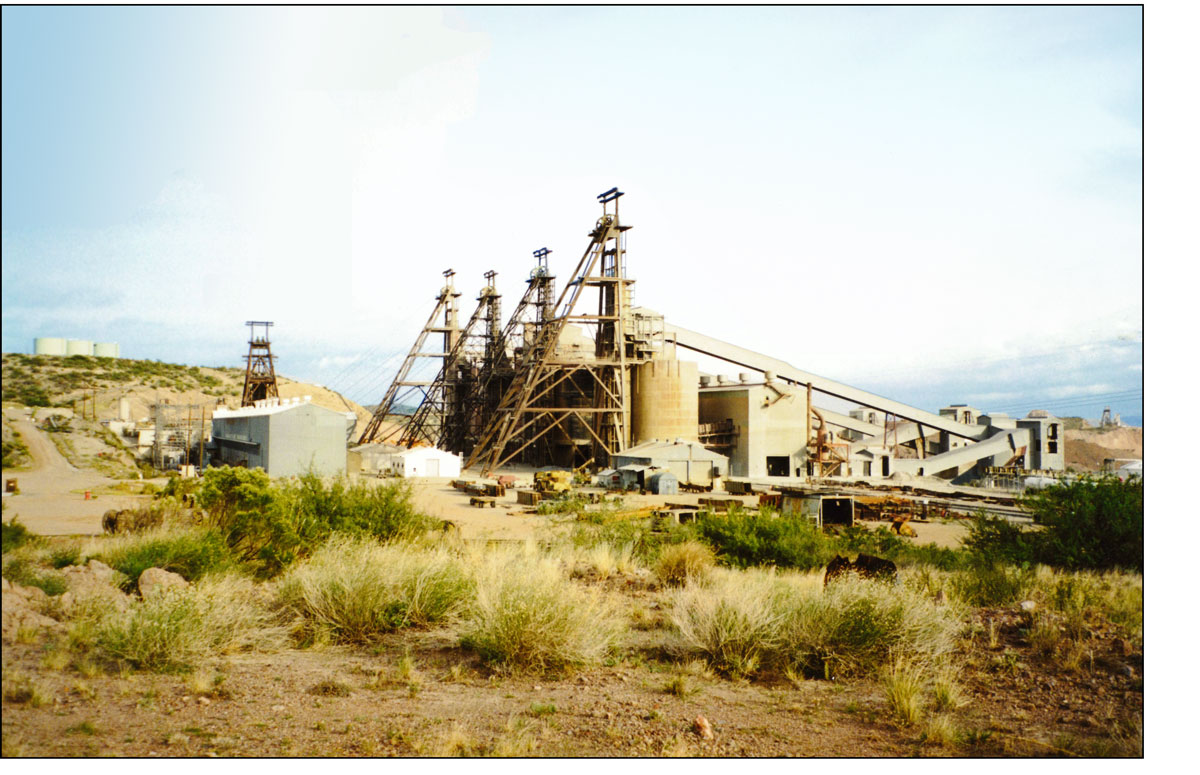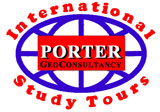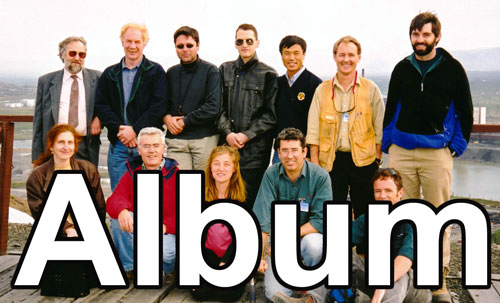| |||||||||||
|
Cordillera '98 Porphyry Related Cu & Au Deposits in the Cordillera of the Americas March 16 - April 8, 1998 | |||||||||||
|
| |||||||||||

Porter GeoConsultancy conducted a two module professional development course that visited fifteen of the classic porphyry copper ±gold ± molybdenum deposits in four countries and on two continents.
Historically, many of the classic, widely known porphyry deposits of the world have been concentrated within the Cordillera of North and South America, where the bulk of experience and knowledge was still centred in 1998. These deposits range from Late Triassic to late Cenozoic in age, and are associated with both localised acid or intermediate porphyritic plugs and dykes, to apophyses and zoned cores of extensive batholiths, and with intrusives with both calc-alkalic and alkalic compositions. Some are fracture controlled stockworks, groups of large veins, disseminated masses, breccia pipes, and/or skarns, others are either high sulphidation high level or are low sulphidation orebodies. Others again comprise vast high grade supergene blankets overlying sub-economic hypogene mineralisation, while some are developed as oxide orebodies. This tour allowed an appreciation of those variations.
The two modules included the following: South American Module, in Chile and Argentina - 11 days, from 16 March, 1998 This module started with a one day seminar in Santiago, Chile, presented by a number of Chilean based experts which provided an overview of the tectonics, geology and metallogeny of the Andean porphyry belt, as well as details of the regulatory, social and political environment of exploration and mining in the region. Expert presenters in the morning included Constantino Mpodozis and Paula Cornejo of the Servicio Nacional de Geolog’a y Minería; Richard Leveille of Phelps Dodge; and Tomas Vila of CODELCO. The seminar was also attended by ~50 Chilean industry geologists. In the afternoon tour participants delivered presentations on porphyry deposits with which they had experience. Over the following days there were technical geological visits to the Disputada-Los Bronces Miocene to Pliocene Cu-Mo breccia/porphyry copper deposit; the El Teniente Late Miocene to Pliocene breccia hosted porphyry Cu-Mo deposit; the El Indio; the Mid to Late Miocene porphyry to high sulphidation Au-Ag-Cu deposit; the Chuquicamata Upper Eocene to Lower Oligocene porphyry Cu-Mo deposit; El Abra, which in 1998 was mined as a large oxide resource developed in the upper section of a middle Eocene to early Oligocene porphyry system; and Escondida, which was in 1998 mined a a supergene sulphide blanket developed over late Eocene to early Oligocene porphyry system. These deposits are all in Chile, whilst the Baja de la Alumbrera Miocene to Pliocene porphyry Cu-Au system is in Argentina. North American Module, in US and Canada, 10 days, from 30 March, 1998 This module commenced with a one day workshop in Tucson, Arizona, presented by Professor Spencer Titley, entitled "Geology of the Porphyry Deposits in the Western United States". This was followed by technical geological visits to the San Manuel hypogene and supergene porphyry Cu deposit associated with a Late Cretaceous quartz monzonite porphyry (pictured above); Ray supergene and hypogene deposit, hosted within Proterozoic siliceous schists and dolerites with no clear central porphyry stock; Mission porphyry and skarn Cu-Mo deposit hosted in Palaeozoic dolomite-limestone-quartzite and a sill of 56.7 Ma Palaeocene quartz-monzonite porphyry; Sierrita, a low grade, low total sulphide hypogene orebody in Eocene porphyries and volcanics; and Silver Bell, at which economic mineralisation is predominantly supergene, associated with a series of Late Cretaceous quartz monzonite porphyry stocks. All of these are in Arizona, USA. These were followed by Bingham Canyon, a hypogene Cu-Au-Mo-Ag porphyry deposit, with lesser skarn bodies, associated with a late Eocene quartz-monzonite porphyry, although the original deposit had a rich supergene cap. This deposit is in Utah, USA. The tour then continued in Canada, commencing with a one day workshop at the Mineral Deposit Research Unit of the University of British Columbia with Professor John Thompson on the "Geology of the Porphyry Copper & Gold Deposits of Western Canada". This was followed by technical visits to the Highland Valley cluster of large low grade hypogene porphyry copper-molybdenum deposits within Upper Triassic calc-alkalic intrusives; and the Afton/Ajax group of Upper Triassic to Lower Jurassic alkalic porphyry Cu-Au-Ag deposits. The last two are in British Columbia, Canada. This study tour was planned, organised and managed by Porter GeoConsultancy as a professional development course on the curriculum of the Australian Mineral Foundation. | |||||||||||
| |||||||||||
|
| |||||||||||












